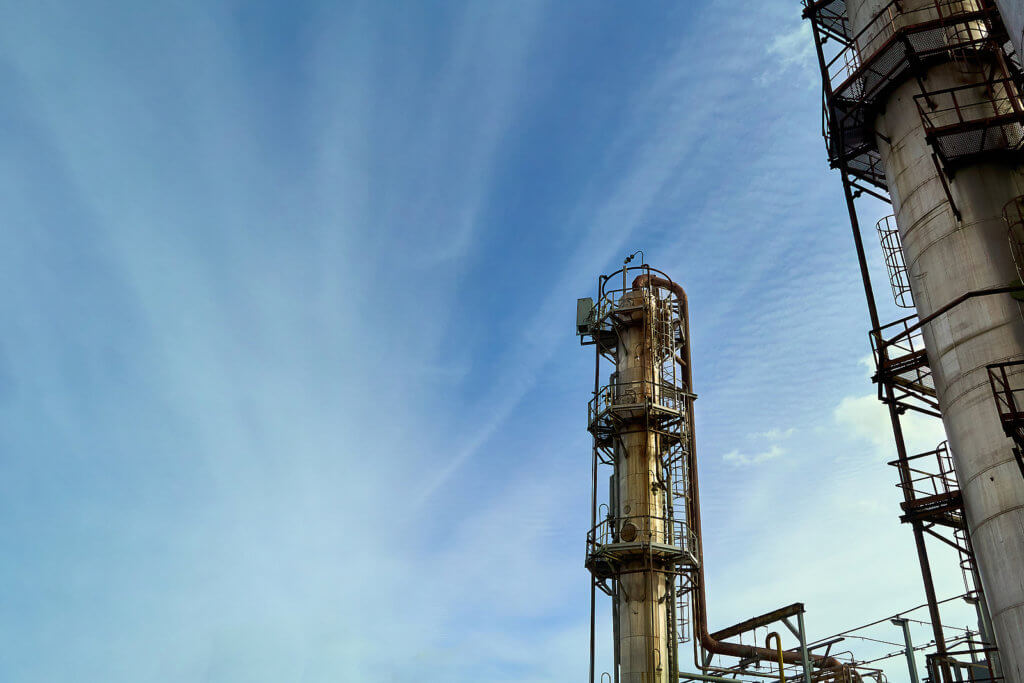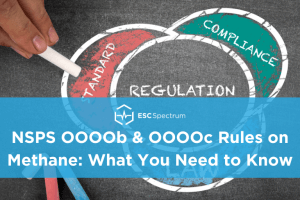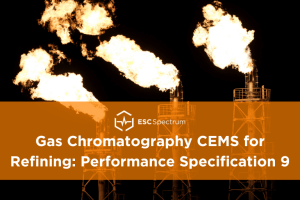This case study will focus on Calumet Montana Refinery’s challenges and how they were able to solve them using ESC Spectrum’s StackVision software. It features Joe Dauner, a chemical and biological engineer by academic training who worked as an environmental engineer for air quality in the oil and gas industry for ten years before transitioning to his current role as Environmental Manager at Calumet Montana Refining.
Joe has been at Calumet since 2017. He started after a 2015 expansion project to help finalize compliance and environmental program deliverables to the refinery. As the Environmental Manager, Joe manages the air, waste, water, and general environmental issues for the refinery.
Calumet Montana Refinery Overview
The Calumet Montana Refinery (CMR) is a small refinery located in Great Falls, MT, with a capacity of about 30,000 bbl/day. Prior to a significant expansion project in 2015, the facility capacity was 10,000 bbl/day. The refinery has existed in some form since the 1920s.
The facility has some process uniqueness that includes operating a large mild hydrocracking (MHC) unit, a small fluid catalytic cracking (FCC) unit, and a HF Alkylation unit. NaSH processing is the method for handling sulfur. The refinery does not have a Coker but does produce asphalt.
Calumet’s Regulatory and Data Collection Challenges
As a result of the 2015 refinery expansion project, the facility struggled with monitoring compliance. Calumet’s two main challenges were:
- Data collection and management under complex regulatory requirements
- Lack of configurability of emissions data with the distributed control system (DCS) and historian
Calumet Challenge #1: Data Collection and Management Under Complex Regulatory Requirements
For Joe, the most prominent issue with CEMS data management was Flare Compliance under the Refinery Sector Rule (RSR). The Environmental Protection Agency (EPA) 40 CFR Part 63 Subpart CC (MACT CC) requirements via the Refinery Sector Rule (RSR) mandates refineries make flare minimization a priority. RSR requires active monitoring and immediate response to maintain minimum efficiencies, on average quadrupling the amount of required data to be collected and reported. Making the necessary monitoring improvements to comply with RSR is operation, employee, and data-intensive.
“The most significant challenges for my job are communicating and implementing environmental requirements for others clearly and efficiently,” he explained. Many of the regulatory requirements we deal with are not clear implementations, and we have to provide that clarity of direction to the facility.”
Prior to the RSR requirements, Calumet most successfully managed the Benzene fence line, tank compliance, and maintenance venting elements with a spreadsheet. But the RSR’s flare system control vision creates a complex interaction between monitoring and controls. The lack of transparency created communication limitations between different refinery personnel groups. Calumet needed a more efficient way to monitor and organize data that maximized communication and transparency.
Calumet Challenge #2: Lack of Configurability of Emissions Data
One of Calumet’s greatest challenges with their previous system was the lack of configurability of emissions data. Their old eDAS was behind the DCS firewall, meaning it was challenging to modify. It required a person to be onsite to modify the black box system – there was no way to see the environmental calculations remotely.
Additionally, all system changes required the help of a process engineer to resolve the issue due to management of change (MOC) and process safety management (PSM) challenges. This lack of efficient data configuration left Calumet eager for a better-suited system for their compliance monitoring and reporting needs.
"Automation behind our decision-making is the best element of the system. It really forced us to review the compliance method and decision-making around error or valid data handling to have a conscious policy to apply...It also allows us to not revisit the same issues over and over every time a minor disruption in data quality or events make a question arise.”
Joe Dauner, Calumet Refinery
Why Calumet Choose StackVision For Air Compliance Monitoring
Why use StackVision for air emissions regulatory compliance and data collection and management? Joe heard about ESC Spectrum from an associated vendor conference he attended when Calumet was selecting Mass Spectrometers. At the time, he was reviewing three or four different solutions – manual Excel spreadsheets, a homegrown DCS/Historian, or updating the existing eDAS system — when he finally selected the StackVision DAS.
ESC Spectrum’s software is leading-edge data acquisition software that offers insights into emissions and compliance that other software solutions simply cannot. StackVision is the most widely used DAS software across the U.S., with more than 3,100 air emission sources in the petrochemical, refining, electric power generation, steel, and pulp and paper industries relying on it for monitoring and reporting.
The StackVision DAS:
- Meets the monitoring and reporting requirements of the Environmental Protection Agency and state regulators.
- Is specifically designed to meet the needs of air continuous monitoring compliance.
- Is user-driven and has an innovative and configurable design that keeps you on top of your compliance status and tends with a real-time set of tools and displays.
- Is in constant development to stay up to date with the ever-changing regulatory realm.
Calumet’s StackVision Benefit: Data Transparency
Since implementing StackVision, the Calumet refinery has seen many improvements, including data transparency for refinery personnel. The refinery operations, process control, and process engineers can now see the compliance calculation for specific regulations in real-time – something that was never available to them before. “A user can see the architecture of the system design; it is just user desire and willingness to learn,” said Joe. “This is a nice contrast from the black box systems.”
Access to the emissions data and calculations that were once limited to physical computers, flash drives, and the people who owned them is now held on the StackVision server. StackVision has empowered Calumet to track where information and signals are being rooted, eliminating the communication limitations that once existed between the refinery personnel. With StackVision, complying with even the most complicated regulations – like the Refinery Sector Rule – is a breeze.
Calumet’s StackVision Benefit: Configurability and Ease of Use
StackVision’s configurability and ease of use are some of the most significant benefits Calumet has recognized since its implementation. Environmental professionals at the refinery can directly make changes and configurations to the system.
With the data acquisition system’s remote access and cloud-based server, refinery personnel and even outside consultants can view and make changes anytime, anywhere. The ease of access and customization of StackVision leads to quicker problem solving and more efficient monitoring and reporting.
“Automation behind our decision-making is the best element of the system. It really forced us to review the compliance method and decision-making around error or valid data handling to have a conscious policy to apply,” explained Joe. “It also allows us to not revisit the same issues over and over every time a minor disruption in data quality or events make a question arise.”
The software’s configurability also allows it to integrate with the refinery’s DCS. Joe explained that Calumet integrated StackVision with the DCS so there is a two-way flow of information: StackVision does the QA/QC of the emissions data, and then validated data and information is alarmed in the DCS.
Calumet’s Suggestions for a Smooth StackVision Implementation
After Calumet’s experience installing StackVision, Joe shared some insight on how to ensure a successful implementation:
- Have an obvious pathway for a compliance calculation to be established/reviewed before handing any work to developers from Stackvision and your DCS/Historian groups — mistakes here lead to costly and timely rework.
- Involve key stakeholders in the design process – including I&E technicians.
- Create a facility data transfer map to formally outline how to route signals between PLCs/servers/instruments.
- Have a personnel training plan and prepare to repeat explanations and directions over and over – patience is key.
Would Calumet Recommend StackVision to Other Refineries?
Thanks to StackVision, Calumet can now efficiently and effectively monitor emissions data for air compliance. “I would recommend the product to any facility looking to manage a CEM system. Elements that I like about Stackvision are the transparency, ease of change management, and the solid support from ESC Spectrum,” said Joe. “Changes done in a week of request should be industry standard and have been with ESC Spectrum.”
ESC Spectrum is a total solution provider for air emissions compliance: from providing quarterly maintenance training, as well as mobile testing, stack testing, repair, and calibration, to developing Data Acquisition Systems and other compliance software….and all the DAS and CEMS services to support those activities. Contact us for a customized demo of StackVision or any of the air emissions solutions that we provide.






